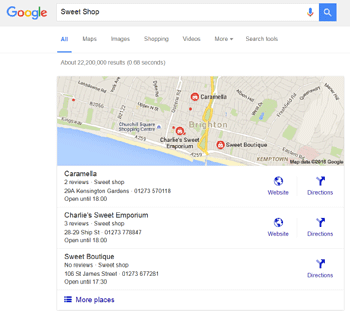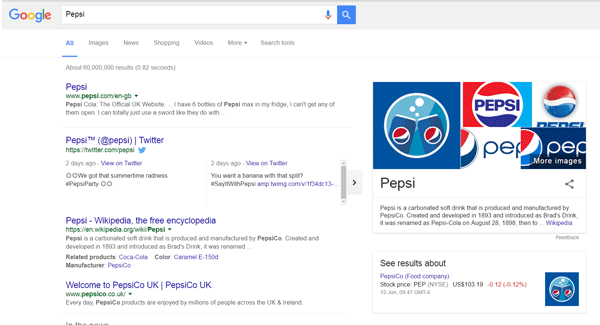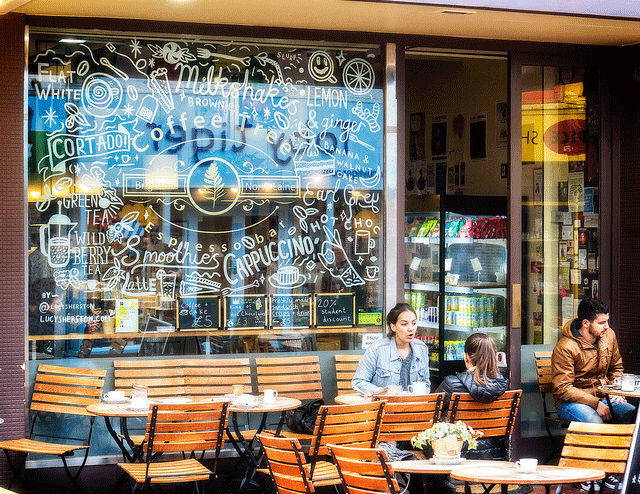Google My Business vs. Google Brand Pages – What Listing Should You Have?
With the constant updates to Google My Business and Google Brand Pages over the last 3 years, it’s been difficult to understand exactly whether a business should have a Google My Business listing or a Google Brand page. Below we’ve covered off lots of scenarios for what type of listing each kind of business should have.
Where does my Google My Business listing show?

- The Knowledge Graph
- Google Maps
- 3-Pack Results in organic results
- Google+
- Linked from your AdWords Advertising
Where does a Google Brand Page show?
- The Knowledge Graph
- Google+
- Linked from your AdWords Advertising

Businesses that cannot have a listing
For a business to qualify for a Google My Business listing, a business must make in-person contact with its customers. If a business is under construction, has not yet opened for business, is a rental property such as a holiday home, or a place that you do not yet use, Google will not verify your listing.

Image source: Lucy's Lettering via Flickr cc
An online shop
If you’re an online shop and you do not service customers at a business address, you should have a Google Brand Page.
Top Tip: Use your Google Brand Page to incentivise your customers to buy from you. Offer one-off codes and competitions to engage and increase your Google+ following.

Image source: POSTMAN PAT via Flickr cc
A standalone shop/business
If you’re a shop or business that your customers and clients visit, you should have a Google My Business listing.
Top Tip: Optimise your listing to be 100% complete to get the most out of your listing and increase the chances of visibility in local search.
A business no-one visits
A business that your customers and clients do not visit should have a Google Brand Page.
Top Tip: Optimise case studies on your website for all the different products or services you provide. This will better improve your websites visibility in local search for location specific keyword terms.
A business with two/more brands
Here’s the difficult one. Google states the following within their guidelines:
"If your business location combines two or more brands, do not combine the brand names into a single listing. Instead, pick one brand’s name for the listing. If the brands operate independently, you may use a separate listing for each brand at this location.”
The problem arises when you have two brands that are similar businesses that require the same address and category. If you are able to choose two different categories, keep your two listings separate.
If you own a company that has two similar brands that require the same category, you should have one Google My Business listing with the information for both brands combined on one listing. This goes against Google’s written guidelines, however, that is what we have been told when actually speaking to them on the phone in regards to two similar brands that need to use the same category and address. This is because, if the address and the category are the same, Google will still recognise the listings as duplicate.
Pros: Google doesn’t mark your listings as duplicate.
Cons: You cannot have two website addresses/phone numbers prominent on your listing or within the knowledge graph.
Top Tip: Google suggests to do the above and combine the brands, however, you could also set one brand up as a Google My Business listing, and the other as a Brand Page. This means that when one of your brands is searched for in Google, information about the correct brand should still show within the knowledge graph.
Pros: Google doesn’t mark your listings as duplicate and you get two separate listings.
Cons: One of your listings will not be a Google My Business listing which will mean that that one will not show when specific location query searches are made.
A business with a virtual office
Google used to let you get away with having a virtual office address set up as a Google My Business listing, however Google’s guidelines state that a customer must be able to visit a business for a Google My Business listing to be accurate and verified. Therefore, you should no-longer set up any business listings for virtual offices. Instead, create a brand page if you do not have a business anyone can visit, or change the location settings in your main Google My Business listing to optimise your listing for all the areas your business covers.
Top Tip: Optimise case studies on your website for all the different products or services you provide. This will help your websites visibility in local search for location specific keywords.

Image source: Hand auf Maus via Flickr cc
Departments within other businesses, universities & institutions
Any businesses that operate on their own within another business are allowed their own Google My Business page even though they may have the same address. The exact name of each department must be different from that of the main business and that of other departments.
Top Tip: Each department must also have completely different names and categories, otherwise the listing will be seen as duplicate.
A business with multiple shops/branches
For larger businesses with multiple shops and branches across the country, you can set up Google Locations which allows you to upload information to Google about each of your listings in one hit. It also allows you to make changes to all your stores/shops all together so it is easier to manage and less of a struggle.
Top Tip: Keep your brand name consistent across all of your shops/businesses.

Still not sure?
Top Tip: If you have an AdWords account for your business and are running paid search, Google can help to answer any Google My Business questions you might have. Just call them on their information line.
Follow our blog to learn more about search engine optimisation, or sign up to the ThoughtShift Guest List, our monthly email, to keep up-to-date on all our blogposts, guides and events.
